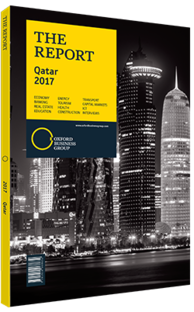New medical insurance scheme in Qatar to strengthen the sector
Efforts are under way to relaunch a compulsory health insurance scheme, with initial expectations of its launch in 2017. While details were still being ironed out at time of press, insurers are hopeful that the system will provide the sector with a new and lucrative business. Underwriters have been setting up new medical systems in preparation for the launch, and providing input as to what shape the scheme should take. Programmes in neighbouring countries have been examined, as other GCC states are in similar need of health care reform.
Progress
Health care is a key pillar of the state’s long-term development plan, Qatar National Vision 2030. This is broken down into five-year plans, with the most recently completed, the National Development Strategy 2011-16, including a concurrent National Health Strategy that aims to develop an integrated, comprehensive, affordable, highly skilled health system. In 2005 the Supreme Council of Health (SCH) was established to steer health care advancement; however, it was disbanded in 2016 and its functions transferred to the Ministry of Public Health (MoPH).
The public health care system is already impressive in many ways. The Primary Health Care Corporation (PHCC) runs 23 centres around the country, 13 of which are in Doha, while Hamad Medical Corporation (HMC) handles the bulk of secondary and tertiary public health care. The Ministry of Interior, the Qatar Red Crescent and Qatar Petroleum also operate facilities. HMC manages six specialist hospitals and three community hospitals, along with the national ambulance service and residential care services. Furthermore, there are several private hospitals and clinics operating in the country, including the American Hospital, Doha Clinic Hospital, Al Ahli Hospital and Al Emadi Hospital.
Private Care
In 2013, as part of the National Health Strategy, the MoPH began the rollout of the National Health Insurance Company (Seha). This allowed Qatari nationals to access participating private hospitals and clinics, in addition to their existing free access to PHCC and HMC facilities, with Seha covering the costs incurred by the private establishments.
However, the numbers of Qataris attending private facilities was often costly to the Treasury and overwhelmed the system, which led to a postponement of plans to extend Seha coverage to expatriates, followed by a suspension of the whole programme in December 2015. In its announcement of the cancellation, the Cabinet stated that a new system – in which private insurers would take the place of Seha – was under consideration. There has since been widespread anticipation of this.
As of late 2017, however, details of the new scheme were yet to be made public, although a period of consultation with insurers has taken place, with companies submitting their ideas and suggestions for how a new scheme could work. The programme may include expatriates too, potentially utilising earlier ideas proposed under the extension of Seha involving payments by employers to cover costs. Meanwhile, the issues of overcrowding and high costs that emerged during the Seha rollout continue to exercise the minds of planners. A recent Alpen Capital report suggested that Qatar’s hospital bed requirements will grow at a compound annual growth rate (CAGR) of 2.9% between 2015 and 2020, and the SCH estimated that the number of inpatient admissions will rise by 91% between 2013 and 2018, and will increase by a further 50% to 2030.
Addressing Capacity
Several new hospitals are under construction: in 2015 the SCH reported that 11 new hospitals and medical research facilities would open by 2022. One is Hamad Bin Khalifa Medical City, which will be the largest health care complex in the Middle East. However, there could be considerable pressure on medical infrastructure until these are complete. In early 2017 insurers claimed the system might not be operative until 2018. Nonetheless, there are substantial potential rewards. Alpen Capital forecasts the health care market to grow at a CAGR of 12.7% up to 2020, when it is expected to be worth some $8.8bn.
You have reached the limit of premium articles you can view for free.
Choose from the options below to purchase print or digital editions of our Reports. You can also purchase a website subscription giving you unlimited access to all of our Reports online for 12 months.
If you have already purchased this Report or have a website subscription, please login to continue.

